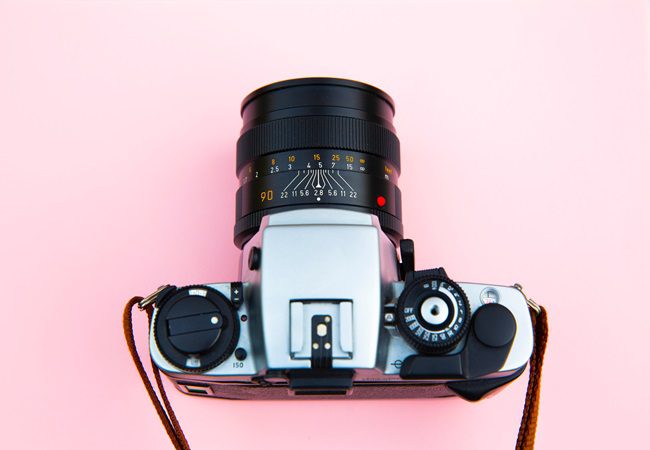Introduction:
In a world increasingly aware of environmental issues, the realm of photography is no exception. Photographers are embracing eco-friendly practices and green tech solutions to minimize their environmental footprint. This article explores the concept of eco-friendly photography, delving into sustainable practices and innovative green technologies that contribute to a greener future for the industry.
The Environmental Impact of Photography:
Photography, with its reliance on equipment, chemicals, and energy, has an inherent environmental impact. As the industry continues to grow, the need for eco-friendly alternatives becomes imperative to reduce its carbon footprint.
Carbon Emissions and Energy Consumption:
The production and use of cameras, lighting equipment, and the energy-intensive process of photo development contribute to carbon emissions and high energy consumption. Recognizing this impact is the first step towards adopting eco-friendly practices.
Sustainable Practices for Photographers:
Photographers are increasingly adopting sustainable practices to reduce their ecological impact. These practices range from mindful shooting techniques to responsible disposal of equipment.
Mindful Shooting Techniques:
Quality over Quantity:
One eco-friendly approach is adopting mindful shooting techniques that prioritize quality over quantity. By carefully composing shots and avoiding excessive photo-taking, photographers can minimize the storage needs for digital images and reduce the demand for printing.
Sustainable Gear Choices:
Photographers are turning to sustainable gear choices to align their equipment with eco-friendly values. This involves selecting products from manufacturers committed to environmentally conscious production methods and materials.
Eco-Friendly Cameras and Accessories:
Some manufacturers are now producing cameras and accessories with eco-friendly materials and energy-efficient designs. These innovations contribute to reducing the overall environmental impact of photography equipment.
Responsible Disposal and Recycling:
In the quest for sustainability, responsible disposal and recycling of old equipment and electronic waste are crucial. Many electronic components, including cameras and batteries, contain hazardous materials that can harm the environment if not disposed of properly.
E-Waste Management Programs:
Photographers are participating in e-waste management programs that facilitate the proper recycling of electronic equipment. These programs ensure that old cameras, lenses, and batteries are recycled responsibly, preventing hazardous materials from entering landfills.
Green Tech Solutions for Eco-Friendly Photography:
Beyond sustainable practices, the integration of green tech solutions is transforming photography into an eco-conscious industry. From solar-powered gear to innovative printing methods, these solutions are paving the way for a greener future.
Solar-Powered Photography Gear:
Solar-powered photography gear is a revolutionary green tech solution that harnesses the energy of the sun to power cameras, lighting equipment, and other devices. This not only reduces reliance on conventional energy sources but also allows photographers to operate in remote locations.
Energy-Efficient LED Lighting:
The shift towards energy-efficient LED lighting is another notable green tech solution. LED lights consume significantly less energy than traditional lighting sources and have a longer lifespan, making them an environmentally friendly choice for studio setups and on-location shoots.
Sustainable Printing Methods:
In the realm of print photography, sustainable printing methods are gaining traction. Eco-friendly inks, recycled paper, and efficient printing processes contribute to reducing the environmental impact of creating physical prints.
Digital Innovations for Sustainability:
The digital era has ushered in innovations that contribute to the eco-friendliness of photography. From cloud storage to advanced editing software, these digital solutions minimize the need for physical resources.
Cloud-Based Storage and Collaboration:
Cloud-based storage and collaboration platforms are reducing the demand for physical storage solutions. Photographers can seamlessly store and share their work in the digital realm, minimizing the need for physical prints and storage space.
AI-Driven Editing Efficiency:
Artificial Intelligence (AI) is playing a role in making editing processes more efficient. AI-driven algorithms can optimize images for quality and reduce the need for extensive post-processing, ultimately saving energy and resources.
Remote Photography and Virtual Tours:
The ability to capture images remotely and offer virtual tours through digital platforms is another eco-friendly practice. This reduces the need for extensive travel, lowering the carbon footprint associated with on-location shoots.
Advocacy and Community Engagement:
Photographers are becoming advocates for environmental conservation and sustainability within their communities. By actively engaging with environmental causes and using their influence, photographers can contribute to raising awareness and promoting eco-friendly practices.
Sustainability Campaigns and Partnerships:
Photographers are initiating sustainability campaigns and forming partnerships with eco-conscious brands. These collaborations aim to promote eco-friendly practices within the industry and inspire a broader commitment to environmental conservation.
Challenges and Opportunities:
While the shift towards eco-friendly photography is promising, there are challenges that the industry must address. Overcoming these challenges presents opportunities for innovation and collaboration.
Cost Considerations and Affordability:
Adopting sustainable practices and green tech solutions may have initial cost implications for photographers. However, as demand grows and technology advances, the affordability of eco-friendly options is likely to improve.
Industry Standards and Certification:
Establishing industry standards and certification for eco-friendly photography practices is an ongoing challenge. However, this also presents an opportunity for organizations and photographers to collaborate in creating guidelines for environmentally conscious conduct.
Consumer Education and Awareness:
Consumer education and awareness are vital aspects of promoting eco-friendly photography. By educating clients about the environmental impact of different photography practices, photographers can encourage a collective commitment to sustainability.
Future Trends:
Innovating for a Greener Tomorrow:
The future of eco-friendly photography holds exciting prospects. As technology continues to advance, new innovations and sustainable practices will further shape the industry’s environmental impact.
Biodegradable Camera Components:
The development of biodegradable camera components is a future trend that could significantly reduce the environmental impact of discarded equipment. Manufacturers are exploring materials that break down naturally, minimizing the ecological footprint of photography gear.
Collaborative Initiatives and Global Impact:
Collaborative initiatives and a global focus on eco-friendly photography can drive positive change. By sharing knowledge, resources, and best practices, photographers worldwide can contribute to a collective effort for a greener tomorrow.
Government Incentives for Sustainable Practices:
Government incentives for sustainable photography practices could further accelerate the industry’s shift towards eco-friendliness. Tax incentives, grants, and subsidies for environmentally conscious initiatives can motivate photographers to adopt green tech solutions.
Conclusion:
The concept of eco-friendly photography is not just an aspiration but a dynamic movement reshaping the industry. Photographers embracing sustainable practices and incorporating green tech solutions are leading the way towards a greener future. From mindful shooting techniques to innovative solar-powered gear, the collective effort to reduce the environmental impact of photography is evident. As the industry continues to evolve, the possibilities for innovation, collaboration, and advocacy for environmental conservation are boundless. By capturing a sustainable future, photographers are not only preserving the beauty of the world through their lenses but also contributing to its long-term health and vitality.































